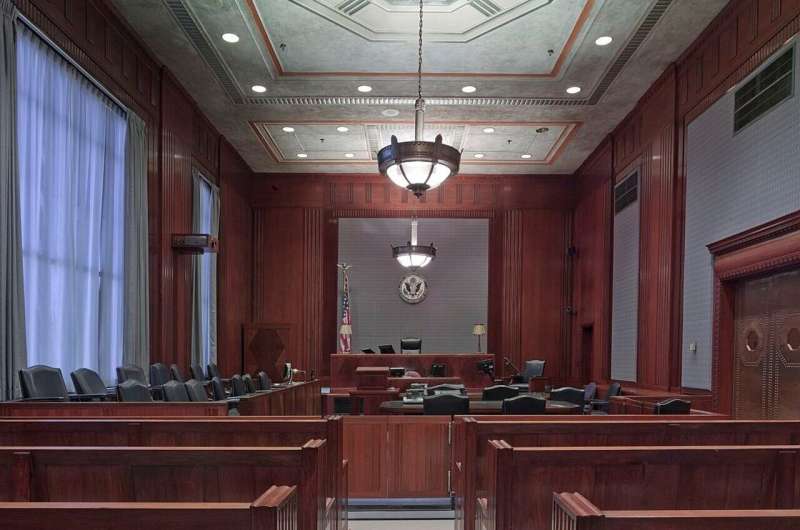Evidence of defendants’ adverse childhood experiences can elicit jurors’ leniency in capital trials

Adverse childhood experiences (ACEs) are potentially traumatic events that occur from birth to age 17. A new study examined the effect of ACEs on jurors’ sentencing decisions in hypothetical death penalty cases. The study found that defense testimony elicited jurors’ leniency, largely through their responses to ACE evidence.
The study, by researchers at Minnesota State University (MSU), Mankato and St. Edwards University, appears in Justice Quarterly, a publication of the Academy of Criminal Justice Sciences.
“The role of adverse childhood experiences in death penalty trials merits special attention,” says Tyler J. Vaughan, associate professor of criminal justice at MSU, Mankato, who led the study. “Though a significant body of research has examined the impact of mitigating evidence and the role of culpability, as well as anger, on sentencing decisions, ACE evidence is unique because it can elicit different emotional responses from jurors.”
Criminologists are increasingly focusing on ACEs as risk factors for criminal and violent behavior. Traumatic childhood events—childhood maltreatment; emotional, physical, and sexual abuse; emotional and physical neglect; exposure to violence, mental illness, and substance abuse; and parents’ abandonment, incarceration, or separation—have been found to have profound consequences for future criminal behavior. Although research on defendants in death penalty trials and death row inmates is limited, childhood abuse and neglect is common in this group.
In this study, researchers recruited nearly 1,500 participants to take part in mock juror tasks in which defendants’ exposure to ACEs as mitigating evidence was manipulated. Participants were similar demographically to jurors in the Capital Jury Project (a consortium of university-based studies on jurors’ decision making in U.S. death penalty cases): primarily non-Hispanic and female and with an average age of 37.
Participants were given several pieces of information: 1) vignettes of death penalty trials featuring one of four hypothetical crimes (murder of police, murder of children, murder of multiple victims, murder in the course of a robbery); 2) details of defendants’ criminal history and ACEs (a control group did not receive the ACE information); 3) testimony by expert witnesses about the relationship between childhood adversity and decreased ability to reason; 4) photos of the defendants, some of whom were Black and some of whom were white.
Participants who received information about defendants’ ACEs were 35% to 50% less likely to vote for the death penalty than participants who were not given that information, with even steeper reductions in the likelihood of sentencing to death when the hypothetical defendant was exposed to more childhood adversity. Sentencing decisions were affected by estimations of blameworthiness, future dangerousness, and sympathy, the study found.
“Practically speaking, our findings suggest that investigating ACEs and presenting this evidence are critical in eliciting leniency in death penalty cases,” notes Lisa Bell Holleran, assistant professor of criminal justice at St. Edwards University, who co-authored the study. “They also have implications for the constitutionality of capital punishment in cases where the defense presents ACEs as mitigating evidence.”
Specifically, to fulfill the Supreme Court’s mandate to narrow the application of the death penalty to the most culpable defendants, the authors argue, jurors need more guidance in how to use mitigating evidence within the confines of a meaningful culpability inquiry. “Although we found some indication that mock jurors consider culpability in deciding the appropriate sentence, we found sympathy to be far more important,” Holleran says.
Because the study is based on a simulation, the validity and generalizability of its findings are limited, the authors note. Also, the study’s participants differed in several ways from jurors in actual death penalty trials, including that they received less evidence and testimony, and that they made their sentencing decisions alone.
Adverse childhood experiences in capital sentencing: A focal concerns approach to understanding Capital Juror Leniency, Justice Quarterly (2022). DOI: 10.1080/07418825.2022.2038242
Provided by
Crime and Justice Research Alliance
Citation:
Evidence of defendants’ adverse childhood experiences can elicit jurors’ leniency in capital trials (2022, March 24)
retrieved 24 March 2022
from https://phys.org/news/2022-03-evidence-defendants-adverse-childhood-elicit.html
This document is subject to copyright. Apart from any fair dealing for the purpose of private study or research, no
part may be reproduced without the written permission. The content is provided for information purposes only.
For all the latest Science News Click Here
For the latest news and updates, follow us on Google News.

